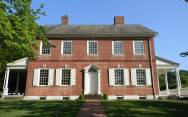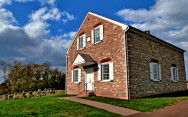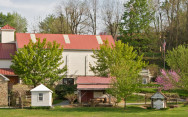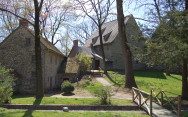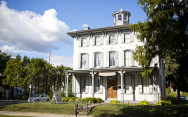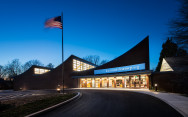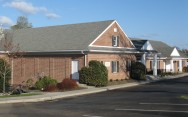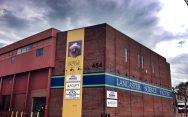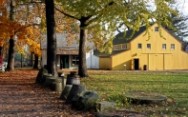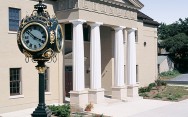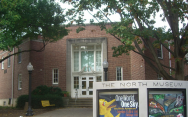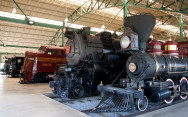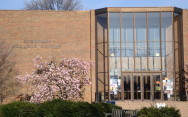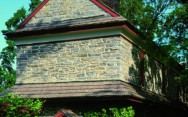 Lancaster County has a rich history dating to the earliest Colonial times. Your visits to our museums will teach you much about it. Here are some quick tidbits:
Lancaster County has a rich history dating to the earliest Colonial times. Your visits to our museums will teach you much about it. Here are some quick tidbits:
Lancaster County Creation
Lancaster County was established in 1729, in part of what was then Chester County. It was named by John Wright in honor of his home in England. It grew rapidly, and attracted a variety of talented people, including professionals, craftsmen, traders, merchants and inventors.
First Residents of Lancaster
 Lancaster’s first residents were American Indians, including the Susquehannocks (also known as Conestogas), Shawnees, Delawares, and others. Lancaster City was first called Indian Town. The first permanent settlers were the Mennonites, who arrived in 1710 seeking religious freedom. Hans Herr, their bishop, occupied his house in 1719, which still stands as the Hans Herr House, a member museum. The Amish arrived some years later. English and Germans were among the early settlers.
Lancaster’s first residents were American Indians, including the Susquehannocks (also known as Conestogas), Shawnees, Delawares, and others. Lancaster City was first called Indian Town. The first permanent settlers were the Mennonites, who arrived in 1710 seeking religious freedom. Hans Herr, their bishop, occupied his house in 1719, which still stands as the Hans Herr House, a member museum. The Amish arrived some years later. English and Germans were among the early settlers.
Lancaster City as Capital
Lancaster City served as the capital of the nation when the Continental Congress vacated Philadelphia and held a session in the old Court House on September 27, 1777. The day after, seeking better shelter, it moved to York. Lancaster became the capital of Pennsylvania in 1799, again making use of the Court House and what is now the Heritage Center Museum, until Harrisburg was designated in 1812.
Conestoga Wagons
 The Conestoga Wagon originated in the Conestoga Valley of Lancaster County around 1717. Known as the “ships” of inland commerce, these canopied wagons carried merchandise, farm produce and passengers, and were heavily used in westward development. Information about them, as well as an actual wagon, is available at the Conestoga Area Historical Society, a member museum.
The Conestoga Wagon originated in the Conestoga Valley of Lancaster County around 1717. Known as the “ships” of inland commerce, these canopied wagons carried merchandise, farm produce and passengers, and were heavily used in westward development. Information about them, as well as an actual wagon, is available at the Conestoga Area Historical Society, a member museum.
The Lancaster Rifle
The Lancaster Rifle, with a rifled barrel for accuracy, was referred to by the British as ‘the widow maker’. Later known as the Pennsylvania Rifle, and then as the Kentucky Rifle, it was provided to Washington’s troops by Lancaster’s William Henry, the Continental Army’s armorer.
Fulton’s Follies
 Robert Fulton, a Lancaster native, was an early inventor of practical steam applications. In 1807, his steamship ‘Claremont’ sailed up the Hudson river, and was labeled by his detractors as ‘Fulton’s Folly.’ He designed the torpedo, a double-inclined plane for canals, a rope-making machine, and the US Navy’s first steam warship. Two years before Fulton’s birth in 1765, another Lancaster citizen, William Henry, had suggested using steam to propel boats, but had not been able to make it practical. The Fulton Opera House, on the National Historic Register, is named for Fulton.
Robert Fulton, a Lancaster native, was an early inventor of practical steam applications. In 1807, his steamship ‘Claremont’ sailed up the Hudson river, and was labeled by his detractors as ‘Fulton’s Folly.’ He designed the torpedo, a double-inclined plane for canals, a rope-making machine, and the US Navy’s first steam warship. Two years before Fulton’s birth in 1765, another Lancaster citizen, William Henry, had suggested using steam to propel boats, but had not been able to make it practical. The Fulton Opera House, on the National Historic Register, is named for Fulton.
Early Roads
America’s first successful turnpike, the Philadelphia-Lancaster Turnpike, opened in 1794. Early users were the Conestoga wagons built here, known as ‘inland freighters.’ The Pennsylvania Turnpike, known as America’s first superhighway, traverses the northern part of the county. Lancaster County has more covered bridges than any other Pennsylvania county.
Presidents
 James Buchanan was the first and only bachelor president. His home, Wheatland, is now preserved as a museum. President Lincoln stopped in Lancaster in 1861, en route to his inauguration, which Buchanan, who had been the 15th president, attended in Washington, DC. Other prominent Americans celebrated in Lancaster include Benjamin Franklin and Chief Justice John Marshall, for whom Franklin and Marshall College is named.
James Buchanan was the first and only bachelor president. His home, Wheatland, is now preserved as a museum. President Lincoln stopped in Lancaster in 1861, en route to his inauguration, which Buchanan, who had been the 15th president, attended in Washington, DC. Other prominent Americans celebrated in Lancaster include Benjamin Franklin and Chief Justice John Marshall, for whom Franklin and Marshall College is named.
The Telegraph
In January 1846, the first commercial telegraph line in the country began with the message ‘Why don’t you write, you rascals?’ Other technological leadership included early construction of dams for generation of electric on the Susquehanna river, introduction of embossed inlaid linoleum and the first crematorium in the United States.
Railroads

Lancaster County saw early involvement in the creation of railroads, with the Columbia and Philadelphia being chartered in 1823. In 1834, the first passengers arrived on horse-drawn trains, followed by a locomotive several days later. The main line of the Pennsylvania Railroad, called the Great Broad Way, carried heavy freight and passenger service. Other railroads traversed the county. The Strasburg Rail Road has been in operation since 1851, and still operates as a successful and heavily visited tourist railroad, adjacent to the Railroad Museum of Pennsylvania, which houses one of the world’s premier collections of historically significant locomotives and other railroad materials.
Civil War
Lancaster County residents strongly opposed slavery prior to the Civil War, and stations on the Underground Railroad were located here. Many citizens served in the Union forces, including several prominent generals. Women from Lancaster went to Gettysburg to aid the wounded.

Additional information on the county’s history is available from the Lancaster County Historical Society by clicking here.The seal of Lancaster County, adopted in 1979, a symbol from our early art signifies the heart of man living in the heart of God and so recognizes the freedom and diversity of religion in the County and its strong influence for virtue, truth, and honesty. Within the heart is a Conestoga Wagon, a product of the ingenuity and craftsmanship of our County, surmounted by Pennsylvania rifles, a similar product. The fertile earth is displayed in the base of the heart to mark our appreciation of its beneficence and the stewardship of our farmers. Piles of husked corn lie on the ground in tribute to this native grain. For further information on Lancaster’s County Government, click here


